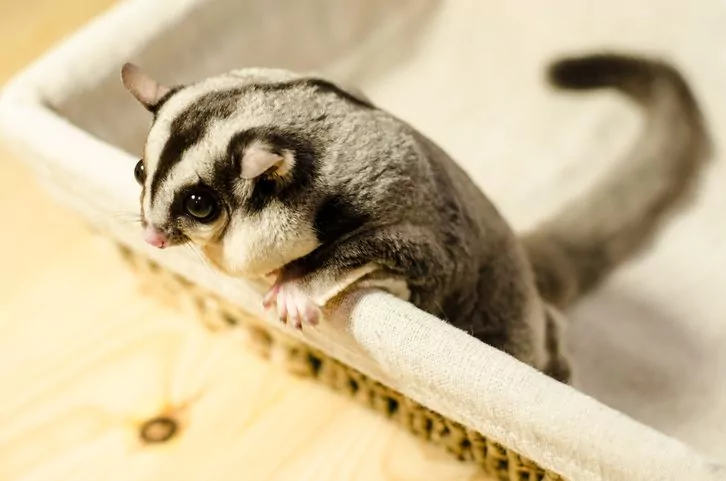In general, adult male sugar gliders should weigh between 100 to 150 grams, and adult females should weigh between 80 to 120 grams. However, weights will vary among individual animals and different subspecies.


If they are overweight, however, they are susceptible to many health issues and even death. Learn more about the signs of sugar glider obesity by reading the Avian & Exotic Animal Hospital of Louisiana article below.
Signs of Sugar Glider Obesity
Here are three signs that your sugar glider is overweight:
Low Activity Level
Overweight sugar gliders often become lazy and reluctant to play. He often loses enthusiasm about playing with cage mates or human companions. Overweight gliders often only come out of their hide pouches to eat.
Health Issues
If you notice signs of exercise intolerance, a rounded body, or misshapen and abnormal stools, it may be because your pet is overweight and eating a lot of high-caloric food.
Some may also have fat deposits in their eyes—especially when they were young and their mother was fed a high-fat diet.
You Can Feel The Fat
If you handle your sugar glider regularly, you should feel a physical difference when he gains weight.
How Obesity Can Help Your Sugar Glider
Dietary Changes
Sugar gliders can become obese if they are fed an improper diet (especially foods high in sugar or carbohydrates, such as fresh or canned fruit). If you notice that your pet has gained weight, you should switch to a better balanced diet (low sugar, etc.). When making changes to what you feed your sugar glider, however, you should be careful and do so gradually to avoid stressing them out.
A proper diet for a sugar glider consists of approximately 15 to 20% of their body weight of which 1/3 is nutritionally balanced pelleted kibble, 1/3 is a nectar/sap-based mixture, and 1 /3 is a handful of insects , a calcium-based multivitamin, and a variety of fresh vegetables and fruits (but again, always offer more vegetables—gliders will always go for the sweet fruit if it is in front of them). You should also make extruded kibble made specifically for them available at all times. Of course, plenty of water—preferably filtered water—should also be accessible 24/7.
Foods you should not give your sugar glider include chocolate, dairy products, canned fruit (because they contain too much sodium and preservatives). Fruits and vegetables known to be high in oxalates such as raspberries, strawberries, blackberries, spinach, carrots, beets, pears, lettuce, figs, and collards should not be offered because they can impair calcium absorption. Raw corn should only be offered occasionally. Yogurt treats should only be offered 1-2 times a month because these treats are very high in sugar.
Exercise
Gliders can also become overweight when they don’t get enough physical activity. They need plenty of space in their cages to move around and be active.
Obesity can cause gliders to have irregular sleep patterns (because overweight animals are lazy and sleep all the time) and make them more prone to arthritis in their joints.
Getting a larger cage and adding climbers and cage vines can help your sugar glider exercise and lose weight to become healthier.
Our Exotic Animal Hospital Can Help Your Sugar Glider’s Obesity
By looking for the signs of an obese sugar glider as mentioned earlier, you can get your pet back to a healthy weight more quickly. If you have any questions about your obese sugar glider, please contact the Avian & Exotic Animal Hospital of Louisiana at (504) 455-6386.


